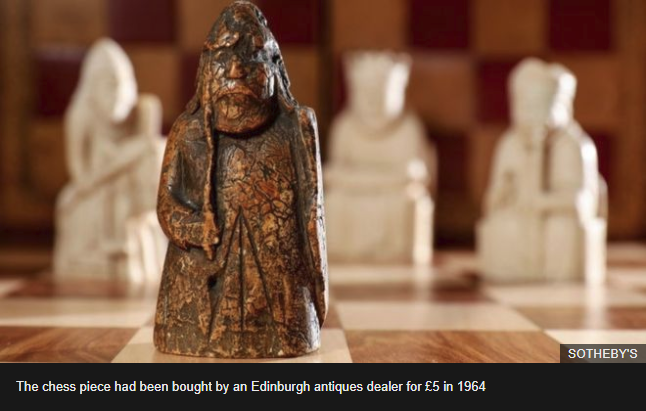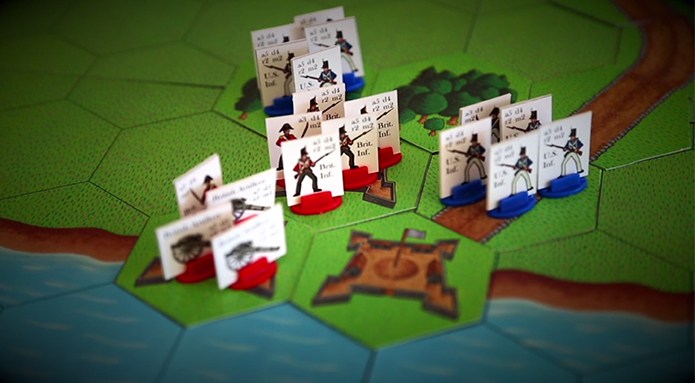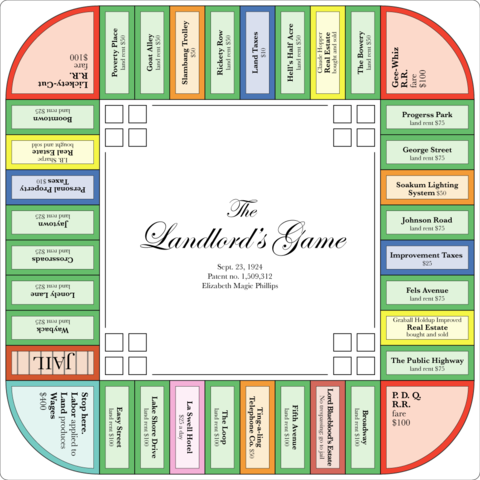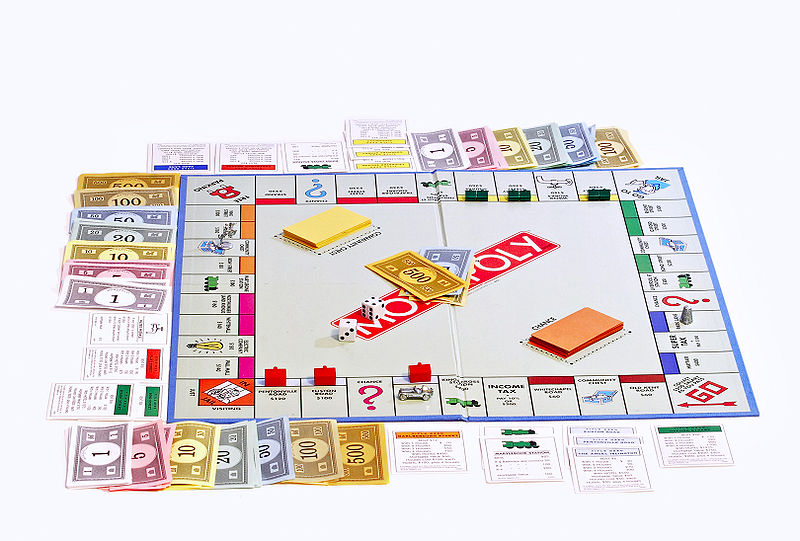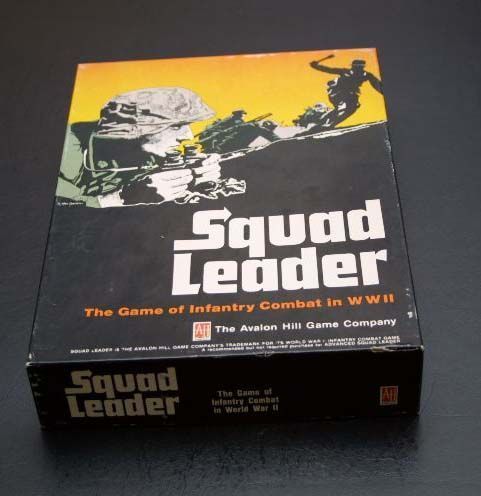J.J. McCullough
Published 20 Aug 2022The story behind some of America’s most iconic postwar toys, including GI Joe, Play-Doh, Monopoly, and Stretch Armstrong.
(more…)
December 17, 2022
The history of America’s most famous toys
December 18, 2021
QotD: The Game of Life
Life, as it is often called, was conceived as a modern take on a board game designed in 1860 … called the Checkered Game of Life …
By 1960, the Checkered Game of Life had disappeared from most American game tables. It had been replaced by such as entrants as Monopoly, which rewarded winners with riches, punished losers with penury and became one of the top-selling board games in the United States during the Depression. Mr. Klamer’s task, as assigned by the Milton Bradley Co., was to create a game to mark the company’s 100th anniversary … With the assistance of colleagues … Mr. Klamer updated [the Checkered Game of Life] for the aspirations of contemporary players. For instance, players of the new version would choose between a “business” route, which afforded an immediate salary, and “college”, which promised a larger but delayed one … To board game enthusiasts, the Game of Life was a beauty: a marvel of topography with raised roads that players traversed in their station-wagon game pieces. According to the volume Timeless Toys: Classic Toys and the Playmakers Who Created Them, by Tim Walsh, Life was “the first three-dimensional game board using plastic.” … Destinations in the 1960 version included “Millionaire Acres” — or the “Poor Farm”.
From “Reuben Klamer, toy inventor who created the Game of Life, dies at 99” (WaPo).
I played that game when it was new in the 1960s, and I guess those 3-dimensional aspects and the built-in spinner were pretty exciting. But what a drag it made life seem! You’re a peg in a car and you gather family members to fill the hole in the car and keep driving till you get to the end. At least the end wasn’t called Death.
And it seems that this is where we Baby Boomers learned we’d better go to college. The game had determined the income difference. But you didn’t even have any fun in college or learn anything deep. You just upped your earning potential, and the point of life/Life was to make the most money. What an awful game!
Ann Althouse, “Life as it is often called, was conceived as a modern take on a board game designed in 1860 … called the Checkered Game of Life“, Althouse, 2021-09-17.
June 4, 2019
Missing Isle of Lewis chess piece discovered in Edinburgh
It’s always irritating when you lose a chess piece, but this one’s been missing for a long, long time:
A medieval chess piece that was missing for almost 200 years had been unknowingly kept in a drawer by an Edinburgh family.
They had no idea that the object was one of the long-lost Lewis Chessmen – which could now fetch £1m at auction.
The chessmen were found on the Isle of Lewis in 1831 but the whereabouts of five pieces have remained a mystery.
The Edinburgh family’s grandfather, an antiques dealer, had bought the chess piece for £5 in 1964.
He had no idea of the significance of the 8.8cm piece (3.5in), made from walrus ivory, which he passed down to his family.
They have looked after it for 55 years without realising its importance, before taking it to Sotheby’s auction house in London.
The Lewis Chessmen are among the biggest draws at the British Museum and the National Museum of Scotland in Edinburgh.
They are seen as an “important symbol of European civilisation” and have also seeped into popular culture, inspiring everything from children’s show Noggin The Nog to part of the plot in Harry Potter And The Philosopher’s Stone.
Sotheby’s expert Alexander Kader, who examined the piece for the family, said his “jaw dropped” when he realised what they had in their possession.
H/T to Colby Cosh for the link.
June 18, 2017
Sabres and Smoke: The War of 1812
Last month, Military History Now profiled a new game (and new Ontario-based game company): unusually for today, it’s not a computer game, but a board wargame:
MHN: Tell us about the game.
Sheppard: Sabres and Smoke: the War of 1812 is a two-player light strategy board game that allows players to relive 16 of the War of 1812’s most important battles. From Queenston Heights to Fort York, players command either the British or American armies in battles that shaped the future of North America.
MHN: Tell us about Hand 2 Hand Entertainment. Who are you guys? How did you get started?
Sheppard: We are based near Toronto, Canada and have been working on Sabres and Smoke: The War of 1812 since July of 2016. I founded Hand 2 Hand Entertainment in 2016, the summer after I finished Grade 12, because I although I was lucky enough to find a summer job, there were no hours available. So, I decided to spend my time combining two things that I really enjoy: history and board games. I started by visiting battle sites from the War of 1812 and doing extensive research to make my game historically accurate. From there I created the battle scenarios and the game rules. Hand 2 Hand Entertainment spent the fall and winter designing Sabres and Smoke: The War of 1812, and preparing to launch a Kickstarter campaign in the summer of 2017. This summer, I am running the company out of the Propel Summer Incubator (PSI) program with the Propel Centre for Entrepreneurship at the University of Western Ontario.
[…]
MHN: The computer wargaming market is enormously popular; what can tabletop games offer that computers can’t?
Sheppard: This is an interesting question. I think there is a certain satisfaction to physically moving units on a battlefield in board games like this. Although you can look at units and terrain from a commander’s perspective in video games, doing it on a board feels more real. Players can look at the board in the same way Generals would have looked at maps when commanding real battles throughout history. I think this is what makes light strategy board games special.
February 22, 2015
The forgotten history of the game of Monopoly
At Open Culture, Dan Colman looks at how Monopoly evolved and changed before it became a fixture in children’s games, despite the intent of the original designer:
The great capitalist game of Monopoly was first marketed by Parker Brothers back in February 1935, right in the middle of the Great Depression. Even during hard times, Americans could still imagine amassing a fortune and securing a monopoly on the real estate market. When it comes to making money, Americans never run out of optimism and hope.
Monopoly didn’t really begin, however, in 1935. And if you trace back the origins of the game, you’ll encounter an ironic, curious tale. The story goes like this: Elizabeth (Lizzie) J. Magie Phillips (1866–1948), a disciple of the progressive era economist Henry George, created the prototype for Monopoly in 1903. And she did so with the goal of illustrating the problems associated with concentrating land in private monopolies. As Mary Pilon, the author of the new book The Monopolists: Obsession, Fury, and the Scandal Behind the World’s Favorite Board Game, recently explained in The New York Times, the original game — The Landlord’s Game — came with two sets of rules: “an anti-monopolist set in which all were rewarded when wealth was created, and a monopolist set in which the goal was to create monopolies and crush opponents.” Phillips’ approach, Pilon adds, “was a teaching tool meant to demonstrate that the first set of rules was morally superior.” In other words, the original game of Monopoly was created as a critique of monopolies — something the trust- and monopoly-busting president, Theodore Roosevelt, could relate to.
For more on the modern game, here’s the Wikipedia page.
January 26, 2015
John Hill, RIP
Gerald D. Swick on the death of one of the great wargame designers, the man who created Squad Leader:
If there is a heaven just for game designers, it has a new archangel. John Hill, best known for designing the groundbreaking board wargame Squad Leader, passed away on January 12. He was inducted into The Game Manufacturers Association’s Academy of Adventure Gaming Arts & Design Hall of Fame in 1978; Squad Leader was inducted into the HoF in 2004.
His many boardgame designs include Jerusalem (1975), Battle for Hue (1973), Battle for Stalingrad (1980) and Tank Leader (1986 and 1987), but John was always a miniatures gamer at heart, and anyone who ever got to play a game on his magnificent game table considered themselves lucky. Squad Leader was originally intended to be a set of miniatures rules, but the publisher, Avalon Hill, asked him to convert it to a cardboard-counters boardgame design. His Civil War miniatures rules Johnny Reb were considered so significant that even Fire & Movement magazine, which primarily covered boardgames, published a major article on the JR system. Most recently John designed Across A Deadly Field, a set of big-battle Civil War rules, for Osprey. He completed additional books in the series for Osprey that have not yet been published.
December 20, 2014
Repost – Induced aversion to a particular Christmas song
Earlier this year, I had occasion to run a Google search for “Mr Gameway’s Ark” (it’s still almost unknown: the Googles, they do nothing). However, I did find a very early post on the old site that I thought deserved to be pulled out of the dusty archives, because it explains why I can — to this day — barely stand to listen to “Little Drummer Boy”:
Seasonal Melodies
James Lileks has a concern about Christmas music:
This isn’t to say all the classics are great, no matter who sings them. I can do without “The Little Drummer Boy,” for example.
It’s the “Bolero” of Christmas songs. It just goes on, and on, and on. Bara-pa-pa-pum, already. Plus, I understand it’s a sweet little story — all the kid had was a drum to play for the newborn infant — but for anyone who remembers what it was like when they had a baby, some kid showing up unannounced to stand around and beat on the skins would not exactly complete your mood. Happily, the song has not spawned a sequel like “The Somewhat Larger Cymbal Adolescent.”
This reminds me about my aversion to this particular song. It was so bad that I could not hear even three notes before starting to wince and/or growl.
 Back in the early 1980’s, I was working in Toronto’s largest toy and game store, Mr Gameways’ Ark. It was a very odd store, and the owners were (to be polite) highly idiosyncratic types. They had a razor-thin profit margin, so any expenses that could be avoided, reduced, or eliminated were so treated. One thing that they didn’t want to pay for was Muzak (or the local equivalent), so one of the owners brought in his home stereo and another one put together a tape of Christmas music.
Back in the early 1980’s, I was working in Toronto’s largest toy and game store, Mr Gameways’ Ark. It was a very odd store, and the owners were (to be polite) highly idiosyncratic types. They had a razor-thin profit margin, so any expenses that could be avoided, reduced, or eliminated were so treated. One thing that they didn’t want to pay for was Muzak (or the local equivalent), so one of the owners brought in his home stereo and another one put together a tape of Christmas music.
Note that singular. “Tape”.

An ad from the year of Trivial Pursuit (via OSRcon)
So, Christmas season was officially open, and we decorated the store with the left-over krep from the owners’ various homes. It was, at best, kinda sad. But — we had Christmas music! And the tape was pretty eclectic: some typical 50’s stuff (“White Christmas” and the like), some medieval stuff, some Victorian stuff and that damned “Drummer Boy” song.
We were working ten- to twelve-hour shifts over the holidays (extra staff? you want Extra Staff, Mr. Cratchitt???), and the music played on. And on. And freaking on. Eternally. There was no way to escape it.
To top it all off, we were the exclusive distributor for a brand new game that suddenly was in high demand: Trivial Pursuit. We could not even get the truck unloaded safely without a cordon of employees to keep the random passers-by from trying to grab boxes of the damned game. When we tried to unpack the boxes on the sales floor, we had customers snatching them out of our hands and running (running!) to the cashier. Stress? It was like combat, except we couldn’t shoot back at the buggers.
Oh, and those were also the days that Ontario had a Sunday closing law, so we were violating all sorts of labour laws on top of the Sunday closing laws, so the Police were regular visitors. Given that some of our staff spent their spare time hiding from the Police, it just added immeasurably to the tension levels on the shop floor.
And all of this to the background soundtrack of Christmas music. One tape of Christmas music. Over and over and over and over and over and over and over again.
It’s been over 20 [now 30] years, and I still feel the hackles rise on the back of my neck with this song … but I’m over the worst of it now: I can actually listen to it without feeling that all-consuming desire to rip out the sound system and dance on the speakers. After two decades.
July 20, 2014
Diplomacy – “the game that ruins friendships”
David Hill learns a very hard lesson about trusting English promises:
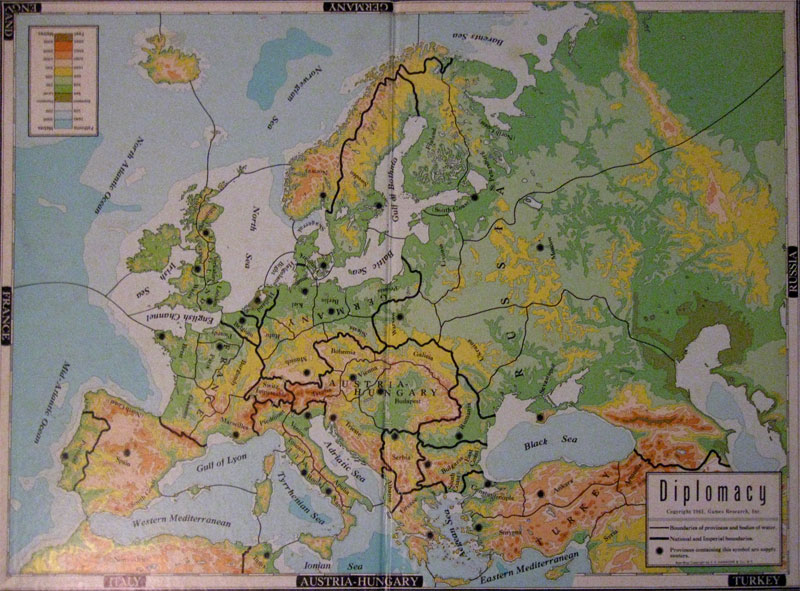
It was the summer of 1909. I was on the south coast of Spain. I remember it well because the season was almost over. Peace was within reach, I felt. There had been a vote to end the war, and the English had told me to support it. But the vote needed to be unanimous to pass, and it failed. The Russian, the Italian, they thought the English voted against it and that I had been lied to. Why should I believe them? The English and I had worked together against all of them for years now. Of course they’d want to sow distrust between us. Now time was ticking. I desperately wanted peace. I wasn’t sure my country would survive another couple of years, with or without England’s help. There wouldn’t be another vote until after the fall.
“Will you support my army in Spain this fall?” I asked.
“Nah. That ain’t happenin’,” the Englishman replied. A wave of dread came over me. He intended to betray me.
“How could you do this to me? After everything I’ve done for you.”
“I guess I’m just a hard muthafucka like that.”
And with that he walked away, leaving me standing in the hallway, mouth agape. He rejoined the other players at the board, who all stared at me, fury in their eyes. We told you so.
I used to spend a lot of time playing Diplomacy, but as I didn’t have enough real-life friends to want to lose a lot of them over a boardgame, I played postal Diplomacy (I even co-published a ‘zine for a while).
If you’ve ever heard of Diplomacy, chances are you know it as “the game that ruins friendships.” It’s also likely you’ve never finished an entire game. That’s because Diplomacy requires seven players and seven or eight hours to complete. Games played by postal mail, the way most played for the first 30 years of its existence, could take longer than a year to finish. Despite this, Diplomacy is one of the most popular strategic board games in history. Since its invention in 1954 by Harvard grad Allan B. Calhamer, Diplomacy has sold over 300,000 copies and was inducted into Games Magazine’s hall of fame alongside Monopoly, Clue, and Scrabble.
The game is incredibly simple. The game board is a map of 1914 Europe divided into 19 sea regions and 56 land regions, 34 of which contain what are known as “supply centers.” Each player plays as a major power (Austria-Hungary, Turkey, Italy, England, France, Russia, Germany) with three pieces on the board (four for Russia) known as “home supply centers.” Each piece can move one space at a time, and each piece has equal strength. When two pieces try to move to the same space, neither moves. If two pieces move to the same space but one of those pieces has “support” from a third piece, the piece with support will win the standoff and take the space. The goal is to control 18 supply centers, which rarely happens. What’s more common is for two or more players to agree to end the game in a draw. Aside from a few other special situations, that’s pretty much it for rules.
There are two things that make Diplomacy so unique and challenging. The first is that, unlike in most board games, players don’t take turns moving. Everyone writes down their moves and puts them in a box. The moves are then read aloud, every piece on the board moving simultaneously. The second is that prior to each move the players are given time to negotiate with each other, as a group or privately. The result is something like a cross between Risk, poker, and Survivor — with no dice or cards or cameras. There’s no element of luck. The only variable factor in the game is each player’s ability to convince others to do what they want. The core game mechanic, then, is negotiation. This is both what draws and repels people to Diplomacy in equal force; because when it comes to those negotiations, anything goes. And anything usually does.
March 28, 2013
“Gaming in the 1970 and 80s felt a little like being into punk rock”
Explanation of the headline: gaming in the 70’s was like being into punk because it was very much an outsider interest, you had to go well out of your way to find it, and it was cool (at least to you, not so much to your family and non-gaming friends). Peter Bebergal finds online caches of some of the classic gaming magazines of the day:
The Internet Archive is one of the great treasures of the internet, housing content in every media; texts, video, audio. It’s also the home of the Wayback Machine, an archive of the Internet from 1996. I thought I had explored the site pretty thoroughly — at least according to my own interests — but recently came across runs of some of the great gaming magazines of the 1970s and 80s; The Space Gamer, Ares, Polyhedron, The General, and — temporarily — Dragon Magazine. These magazines represent not only the golden age of gaming, but expose the thrill and excitement of gaming when it was still new, still on the margins. It was a time when gaming still felt a little, dare I say, punk.
Today, finding members of your particular community of interest is a Google search away, but in the 1970s the only way to be in contact with others who shared interests was through magazines. For many gamers, even finding the games could be difficult. Discovering the gaming magazines revealed an active gaming industry that still maintained a sense of being on the vanguard.
The earliest issues show off their newsletter origins. The Space Gamer and The General started off on plain paper in black and white. Even the first issues of Dragon look like a teenager’s fanzine, but the enthusiasm and energy are infectious. Who couldn’t love the introduction of new monsters for your campaign such as the Gem Var, a creature composed entirely of gemstone and that cannot take damage from bladed weapons. The artists, editors and letter writers were the best friends you had never met. Gaming in the 1970 and 80s felt a little like being into punk rock. You knew it was offbeat, knew that outsiders didn’t get it, but you also knew that this was cool. Even the advertisements and listings of conventions expanded the universe of gaming a thousandfold. Not unlike ordering 45s of unknown bands from punk zines, was sending away for microgames, miniatures and supplements from tiny game publishers.
While I wasn’t as much into the early roleplaying games, I was very much into wargaming and that was in the “respectable” part of the gaming ghetto until the boom in RPGs pretty much took all the oxygen out of the room. Of course, even in the “respectable” area, there were the Napoleonic grognards and the frisson-of-insanity East Front fanatics…
February 27, 2013
RIP Allan B. Calhamer
The creator of the game Diplomacy died this week:
Allan Calhamer, designer of Dimplomacy – possibly the most perfect boardgame – has passed away. en.wikipedia.org/wiki/Allan_B._… … #fb
— John Kovalic (@muskrat_john) February 27, 2013
I was a big fan of the game for many years, even publishing a play-by-mail “zine”, as I mentioned a couple of months back:
Long ago, in the days before personal computers were ubiquitous, there were “zines” (short for magazines, correctly reflecting both non-professional status and less-than-totally-serious content). There was a wide variety of zines for all sorts of interests — rather like the back corners of the internet today, except they were physically distributed using the post office (and therefore had to stay within certain boundaries to be safe). Clive and I used to publish a zine for postal Diplomacy:
Download PDF
Download PDF
Update: Should have included a hat-tip to John Kovalic, who linked to a highly appropriate Dork Tower strip from last year.
Update, the second: The Chicago Sun-Times obituary:
To people in La Grange Park, Allan B. Calhamer was the guy who delivered the mail.
But to those who have played Diplomacy — the popular board game he invented while a law student at Harvard — Mr. Calhamer, who died Monday, was a geek god.
Back in the Fortran era, the game was a sort of board-game version of TV’s Survivor set in pre-World War I Europe, with its shifting alliances, deception and back-stabbing.
[. . .]
In an article he wrote for diplomacy-archive.com, Mr. Calhamer said the game can “make some people almost euphoric and causes others to shake like a leaf.”
“It’s pitiless because, in the game Diplomacy, there will be one winner,” said game designer Steve Jackson, founder of Steve Jackson Games. “You negotiate, you make deals, you lie.”
Game experts and industry analysts say “Dip” influenced generations of designers.
More than 50 years after Mr. Calhamer invented it, enthusiasts still engage in Diplomacy all-nighters, their long stretches of quiet strategizing punctuated by occasional shouts like: “You gave me your word you would attack Berlin!” And: “My own mother took part of Russia from me!” That’s according to chatter on boardgamegeek.com.
The game is jokingly referred to as a pastime that has been “Destroying Friendships since 1959,” said Mike Webb, vice president of marketing and data services for Alliance Game Distributors.
December 29, 2012
Your past will indeed come back to haunt you
Long ago, in the days before personal computers were ubiquitous, there were “zines” (short for magazines, correctly reflecting both non-professional status and less-than-totally-serious content). There was a wide variety of zines for all sorts of interests — rather like the back corners of the internet today, except they were physically distributed using the post office (and therefore had to stay within certain boundaries to be safe). Clive and I used to publish a zine for postal Diplomacy:
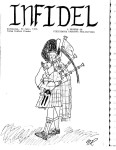 Download PDF |
 Download PDF |
If you want to read ’em — and I wouldn’t blame you in the slightest if you didn’t — you can download a PDF of each issue from Doug’s Diplomacy and Eternal Sunshine. You’ll note that it was a much more innocent time then, as we not only listed our own contact information, but that of many others through the game listings and other parts.
Doug only has issues 11 and 12 available, but they’re a generous representation of what the rest of the production run was like: amateur, laboriously assembled, totally ignorant of both copyright and appropriate credits, and full of in-jokes that nobody aside from the production team would hope to understand (except the “Skulking Cavorter” column: even the publisher and editor had head-scratching moments over that, but it had a noisy fan club among the subscribers). It was a lot of fun to do, and once we ceased production I found I missed it a lot (but not enough to get back into doing it again). I published a few other zine-like things over the next few years, but didn’t get back into a regular publication schedule until I started the blog.
So, thanks to William Plante for digging up these musty relics and bringing them to my attention.


